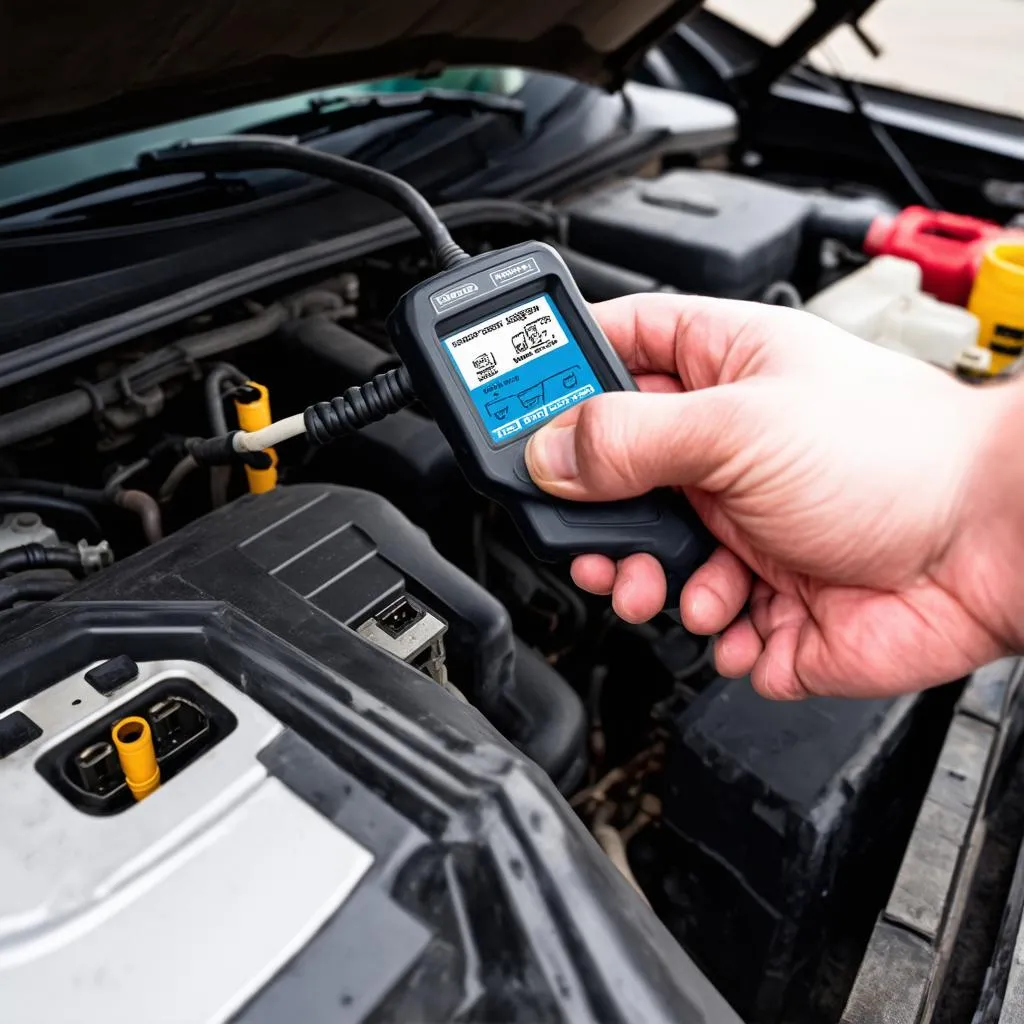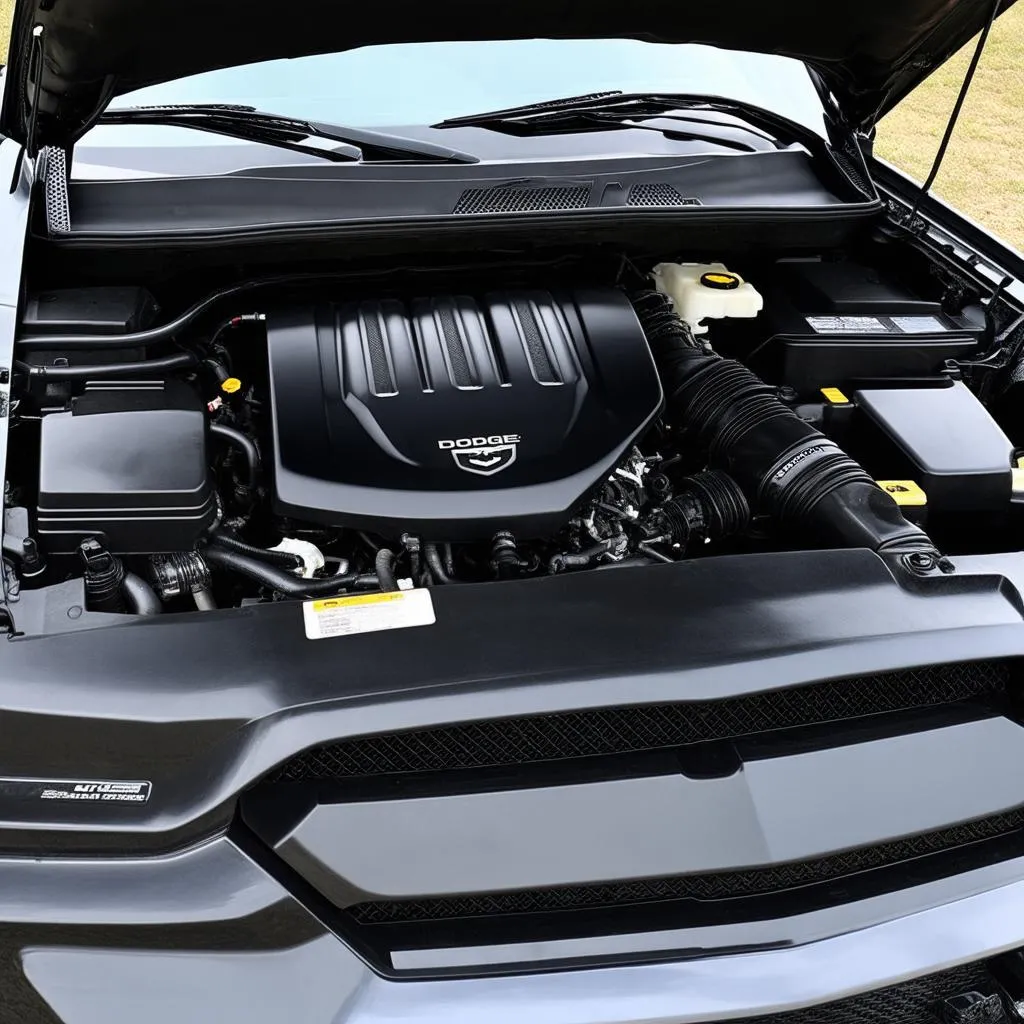“Check engine” light staring back at you from your 2014 Dodge Charger’s dashboard? Don’t panic, it happens to the best of us. It might feel like your car is speaking in riddles, but those cryptic OBD2 codes hold the key to understanding what’s going on under the hood.
Think of it like this: your car has a story to tell, and those codes are like chapters in a mechanic’s manual. In this article, we’ll break down what “2014 Dodge Charger OBD2 codes” mean, how to decipher them, and what you can do about them.
Understanding the Language of Your Car
What Exactly are OBD2 Codes?
OBD2 stands for On-Board Diagnostics, generation two. It’s a standardized system that allows your car’s computer to communicate with a diagnostic tool, like a dealer scanner. This tool reads codes stored in your car’s computer, which are triggered when a sensor detects an issue within a specific system.
Why are 2014 Dodge Charger OBD2 Codes Important?
These codes are your car’s way of giving you a heads-up that something might be wrong. Ignoring them could lead to more serious and costly repairs down the line.
Decoding the Mystery: Common 2014 Dodge Charger OBD2 Codes
Here are some of the most frequently encountered codes for the 2014 Dodge Charger:
-
P0420: This often indicates a problem with the catalytic converter system efficiency. Imagine your catalytic converter as a filter that cleans exhaust gases. This code suggests it might not be doing its job effectively.
-
P0171: This code signals a lean air/fuel mixture in engine bank 1. Picture your engine needing the right balance of air and fuel to run smoothly, like a perfectly mixed cocktail. This code means your engine might be getting too much air and not enough fuel.
-
P0300: This refers to a random or multiple cylinder misfire detected. Think of your engine’s cylinders as individual pistons firing in a precise sequence. This code means some of those cylinders aren’t firing properly, leading to a rough running engine.
-
P0456: This code suggests a very small leak detected in the evaporative emission control (EVAP) system. Imagine the EVAP system as a sealed container for fuel vapors. This code means there might be a tiny leak, potentially releasing harmful vapors into the atmosphere.
Remember: This is not an exhaustive list. Many other codes could appear depending on the specific issue with your vehicle.
 OBD2 Scanner plugged into a car's port
OBD2 Scanner plugged into a car's port
What to Do When the Check Engine Light Turns On
- Don’t Panic: Seeing the check engine light can be unsettling, but it doesn’t always mean a catastrophic failure.
- Read the Codes: The first step is to identify the specific codes triggering the light. You can do this yourself with an affordable OBD2 scanner, or visit a trusted mechanic or dealership.
- Research the Codes: Once you have the codes, research what they mean. Websites like techcarusa.com offer a wealth of information about specific codes and potential causes.
- Consult a Professional: While some issues might be simple DIY fixes, others require specialized knowledge and tools. If you’re unsure about anything, consult a qualified mechanic.
Beyond the Technical: A Holistic Approach to Car Care
Interestingly, some car owners see a connection between car trouble and personal energy. While there’s no scientific evidence to support this, maintaining a calm and positive mindset when dealing with car issues can be helpful. Just like our own bodies, cars thrive on regular maintenance and care.
 Close-up of a 2014 Dodge Charger engine
Close-up of a 2014 Dodge Charger engine
Explore More on Techcarusa.com
Want to learn more about diagnosing car problems? Check out these resources on techcarusa.com:
- Diagnose OBD: http://techcarusa.com/diagnosi-obd/
- 2014 Dodge Charger OBD Port Location: http://techcarusa.com/2014-dodge-charger-obd-port-location/
Need Expert Help? We’re Just a Message Away!
Overwhelmed by those OBD2 codes? We understand! At Techcarusa, we offer expert support for all your automotive diagnostic needs. Contact us on Whatsapp at +84767531508 to connect with our team of experienced technicians. We’re here to help you get your 2014 Dodge Charger back on the road and running smoothly.
Remember: Regular maintenance and timely attention to warning signs can prevent many car problems down the line. Drive safe and enjoy the journey!